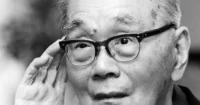Taikichiro Mori: From Professor to Billionaire Real Estate Mogul
Taikichiro Mori was a Japanese businessman, academic, and one of the world’s most surprising real estate tycoons. Known for his modest personality and significant influence on Tokyo’s development, Mori’s journey from professor to billionaire offers insights into Japan’s economic growth and the world of real estate. Here is a comprehensive look at his life, career, achievements, and legacy.
Early Life and Education
Birth and Family Background
Taikichiro Mori was born on March 1, 1904, in Tokyo, Japan. His family was involved in the rice farming business and owned a few rental properties. Mori’s father managed the family’s modest property holdings, which gave young Taikichiro early exposure to property management. However, at this time, real estate was not Mori’s career goal.
Academic Pursuits at Tokyo College of Commerce
Mori pursued higher education at Tokyo College of Commerce, which is today known as Hitotsubashi University, one of Japan’s leading universities for business and economics studies. He graduated in 1928, having specialized in economics and trade. Rather than entering business, Mori decided to stay in academia, believing it would be a stable and fulfilling career.
Career in Academia: Becoming a Professor and Dean
Mori’s academic journey began as an instructor, eventually leading him to become a professor at Yokohama City University. His expertise and dedication led to his appointment as the Dean of the Faculty of Commerce in 1954. Mori enjoyed teaching and was passionate about economics, but his career took a surprising turn after his father passed away, leaving him with two buildings to manage. This marked the beginning of his interest in real estate.
Transition to Real Estate at Age 55
Founding of Mori Building Company
In 1959, at the age of 55, Mori made a bold choice to leave academia and enter the world of real estate. He founded Mori Building Company, starting by managing the two buildings he inherited from his father. His economics background helped him approach real estate with a careful and analytical mindset. This was a late start in a new field, but Mori quickly made a name for himself in Tokyo’s property market.
A Unique Approach to Real Estate Development
Mori’s approach to real estate was unlike most developers of his time. Rather than focusing on quick gains, he looked at the long-term value and the potential for Tokyo’s future growth. He aimed to transform old neighborhoods into modern, multi-functional urban centers. This approach required patience and negotiation with residents and business owners, as Mori would need their agreement to redevelop certain areas. His first major project involved transforming the Toranomon district in Tokyo, a project that would set the foundation for his future success.
Mori’s Vision for Tokyo’s Urban Development
Transforming Tokyo’s Landscape
In the 1960s and 1970s, Tokyo was still a city of narrow streets and small wooden buildings. Mori saw an opportunity to modernize these areas with high-rise buildings made from steel and concrete. He believed that Tokyo needed larger, stronger buildings to meet the demands of a growing business world. This vision was partly influenced by the destruction he had witnessed during the 1923 Great Kanto Earthquake and the firebombing during World War II, which devastated many wooden structures in Tokyo.
The Toranomon Redevelopment Project
One of Mori’s early major projects was the redevelopment of Tokyo’s Toranomon district. He spent years negotiating with residents and merchants, working to convince them to support his vision. This was a slow process, as he often provided new homes for those who had to relocate and made sure they felt secure about the change. This project was one of the first instances of what is now known as “vertical urbanism,” where Mori envisioned mixed-use buildings that would serve as homes, offices, and retail spaces all in one area.
Landmark Developments: Ark Hills and Shiroyama Hills
The Ark Hills Complex
In the 1980s, Mori launched Ark Hills, one of his most well-known projects. Ark Hills was a mixed-use development that combined office spaces, luxury apartments, a hotel, shops, and even a concert hall. This self-contained complex allowed people to live, work, and find entertainment in one place. Ark Hills was especially popular with foreign companies and international executives who wanted a central location in Tokyo. It became a model of Mori’s concept of modern urban life.
Shiroyama Hills and Continued Expansion
After Ark Hills, Mori continued developing similar projects, including Shiroyama Hills, which followed the same mixed-use design. Shiroyama Hills attracted both domestic and international businesses and further cemented Mori’s reputation as a leader in urban development. Mori’s projects played a significant role in establishing Tokyo as a global business hub during Japan’s economic boom.
The Economic Boom and Mori’s Wealth
Japan’s Real Estate Bubble and Mori’s Fortune
During the 1980s, Japan experienced rapid economic growth, known as the “bubble economy.” Tokyo’s land prices soared as businesses and investors flocked to the city, leading to skyrocketing property values. Mori’s property portfolio in Tokyo’s most desirable districts increased in value tremendously. By 1991, Forbes named Mori the richest man in the world, with a net worth estimated at $15 billion. This was a milestone for Mori and solidified his legacy as a billionaire real estate mogul.
A Conservative Financial Approach
Unlike many developers who borrowed heavily to finance their projects, Mori avoided excessive debt. His company was privately owned, which allowed him to make decisions without the pressure of shareholders. As a result, Mori Building Company avoided the financial crisis that hit many other companies when Japan’s real estate bubble exploded in the early 1990s. Mori’s cautious financial strategy saved his company from major losses and protected his assets during the economic downturn.
Personal Beliefs and Lifestyle
A Modest Approach to Wealth
Despite his vast fortune, Mori was known for his modest lifestyle. He rarely flaunted his wealth and was humble about his success, often attributing it to the value of Tokyo’s land rather than personal ambition. He remained grounded and preferred to focus on his work rather than on luxury or fame. Mori’s modesty and simple lifestyle were part of what made him a respected figure in Japan.
Views on Tokyo’s Future
Mori believed that Tokyo’s growth required thoughtful planning and development. He wanted Tokyo to be a city that could compete on the global stage, with high-quality infrastructure and well-designed urban spaces. While he sometimes expressed nostalgia for the old neighborhoods, he also emphasized the need for Tokyo to modernize and adapt to the demands of a new era. Mori’s views on urban development remain influential in Japan’s real estate industry.
Challenges and the Burst of the Real Estate Bubble
The Economic Crisis of the Early 1990s
In the early 1990s, Japan’s real estate bubble burst, leading to a strong decline in property values and a period of economic stagnation known as the “Lost Decade.” Mori’s company saw a reduction in the value of its assets. Still, thanks to his conservative approach, Mori Building was able to weather the storm better than many other real estate firms. Although the company faced challenges in filling office spaces, it did not experience the same level of financial distress as its competitors.
The Transition of Leadership to His Son
Following his death in 1993, Mori’s son Minoru took over Mori Building Company and continued his father’s legacy. Thanks to his father’s careful management and foresight, Minoru inherited a stable and well-respected business. Minoru expanded the company further, continuing Mori’s vision for Tokyo’s development and maintaining the family’s influence in the real estate industry.
Legacy and Influence
Continuing Mori’s Vision for Tokyo
Taikichiro Mori left a lasting legacy in Tokyo’s cityscape. His projects transformed entire districts, establishing Mori Building Company as a pioneer in mixed-use urban development. His emphasis on long-term planning and community-focused development has influenced many other developers and city planners in Japan and beyond. The areas Mori redeveloped, particularly Toranomon and Minato, remain central parts of Tokyo’s economic and social life.
Family’s Continued Impact on Real Estate
Mori’s family continues to play an important role in Tokyo’s real estate market. Minoru Mori expanded the company with additional high-profile projects like Roppongi Hills, another mixed-use complex that became an iconic part of Tokyo. Mori’s granddaughter, Miwako Date, is also involved in the family business, ensuring that Mori’s vision endures through future generations.
Taikichiro Mori’s Enduring Legacy
Taikichiro Mori’s life is an inspiring story of how one man’s vision can shape a city and influence an entire industry. His journey from professor to billionaire shows the power of resilience, careful planning, and a commitment to long-term goals. Mori’s legacy lives on in the skyline of Tokyo and through the Mori family’s continued influence on urban development. His story remains an example of how Taikichiro Mori: From Professor to Billionaire Real Estate Mogul.
Taikichiro Mori’s story is a powerful example of achieving success later in life. Known as one of Japan’s greatest real estate developers, Mori transformed from a quiet professor to the world’s richest man. This journey is a unique mix of resilience, vision, and determination to reshape Tokyo into a modern city.















